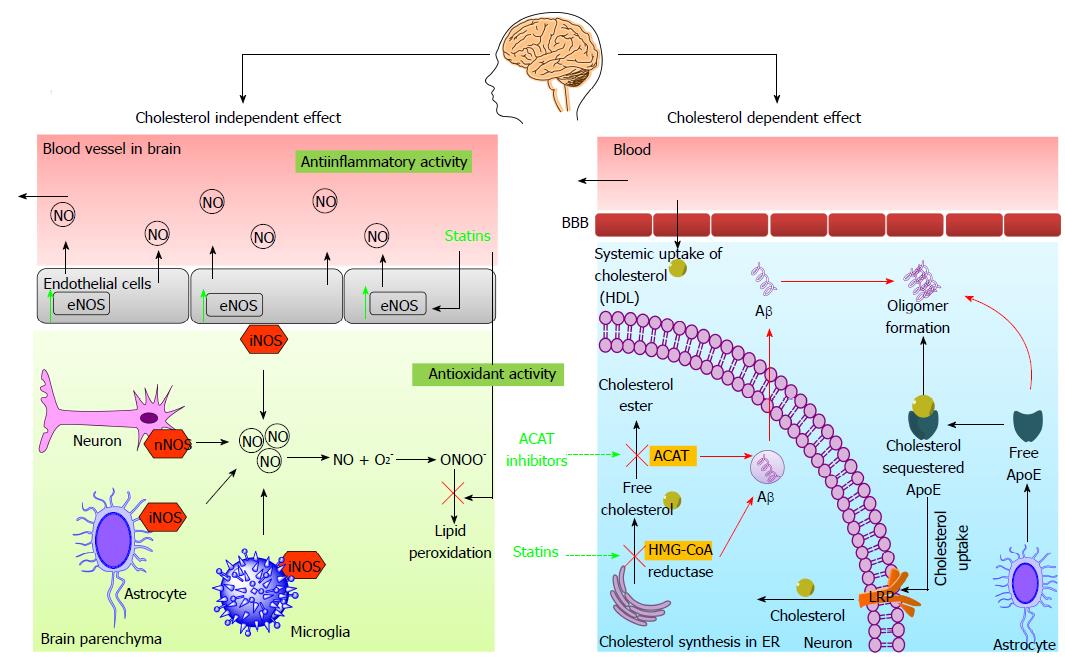Copyright
©The Author(s) 2015.
World J Pharmacol. Sep 9, 2015; 4(3): 236-264
Published online Sep 9, 2015. doi: 10.5497/wjp.v4.i3.236
Published online Sep 9, 2015. doi: 10.5497/wjp.v4.i3.236
Figure 6 Diagrammatic illustration of anti-amyloid activity of 3-hydroxy-3-methyl-glutaryl-CoA reductase inhibitors via cholesterol independent and cholesterol dependent mechanistic pathways.
Cholesterol independent pathway: Statins cause NO mediated anti-inflammatory activity and facilitate the clearance of systemic Aβ by stimulating endothelial nitric oxide synthase. The statins with the virtue of its antioxidant effect cause reduction in lipid peroxidation which is escalated due to elevated levels of NO in AD brain. Cholesterol dependent pathway: The systemic cholesterol enters the brain in form of HDL. The astrocytes originated ApoE facilitates the uptake of extracellular free cholesterol and release into the neuronal cells via LRP. This act reduces free cholesterol and curtails the Aβ genesis whereas un-sequestered free ApoE aggravates the Aβ formation. Statins inhibits the HMG-CoA reductase and subsequently reverse the elevated intracellular cholesterol levels and blocks the Aβ formation. Also, ACAT inhibition leads to reduction in Aβ levels by an unknown mechanism. HDL: High density lipoprotein; BBB: Blood brain barrier; Aβ: Amyloid β; ApoE: Apolipoprotein E; LRP: LDL receptor-related protein; HMG-CoA reductase: 3-hydroxy-3-methyl-glutaryl-CoA; ER: Endoplasmic reticulum; NO: Nitric oxide; eNOS: Endothelial nitric oxide synthase; nNOS: Neuronal nitric oxide synthase; iNOS: Inducible nitric oxide synthase; ACAT: Acetyl-coenzyme a acetyltransferase. AD: Alzheimer’s disease.
- Citation: Desai P, Shete H, Adnaik R, Disouza J, Patravale V. Therapeutic targets and delivery challenges for Alzheimer’s disease. World J Pharmacol 2015; 4(3): 236-264
- URL: https://www.wjgnet.com/2220-3192/full/v4/i3/236.htm
- DOI: https://dx.doi.org/10.5497/wjp.v4.i3.236









